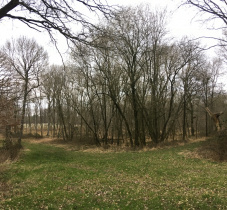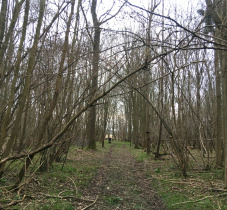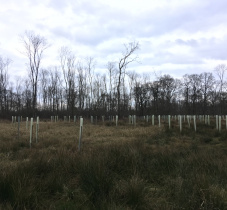Project description
Reforest'Action and Sylva Nova invite you to fund a project to restore this forest in the UK !
The project at a glance
- Number of trees to be planted: 57,930
- Area of the plantation: 38.62 hectares
- Species planted: oak, beech, cherry, poplar, birch, hazelnut, hawthorn, basswood
- Type of project: support for natural regeneration
- Planting period: Spring 2022-2026
The origin of the project
Located in the United Kingdom at Leckhampstead, this project is based on a massif populated by ash trees affected by the chalarosis disease. Due to this biotic risk but also to the lack of maintenance of the plots, the pressure of the game and the lack of plants, this forest stopped regenerating these last years.
Thanks to the various silvicultural works and the valorization of 57 930 trees of diversified species, the forest ecosystem will be restored and made more resistant to climatic hazards, and more favorable to the reception of the local fauna and flora. This method of gentle forest management will respect the forest ecosystem, while ensuring the establishment of species adapted to the conditions of the region. Assisted natural regeneration will thus participate in the development of the local economy in the long term through the production of wood. Finally, the trees will participate in the fight against climate change by storing carbon.
Generated benefits
-
Fight against climate change: trees provide fruit, fodder, wood, resins, tannins etc. Once planted, they regulate temperatures through the shade of their foliage. Carbon sinks, they store CO₂ and are valuable allies in the fight against global warming. They restore soil fertility and prevent soil erosion.
-
Development of biodiversity: agroforestry promotes biodiversity and provides multiple habitats and species. Micro-organisms, fauna, and flora participate in the restoration of an ecological network. They provide refuges for birds that regulate pest populations on crops.
-
Protection of territories: the planting of trees in agroforestry helps to protect the land from extreme weather events. By creating shaded areas, the trees preserve the crops during the dry season and provide them with a protective cover during the rainy season.
-
Soil enrichment: the leaves fallen from the trees will allow the creation of organic matter that will enrich the soils and contribute to the proper functioning of the forest ecosystem.
-
Wood supply: eventually, some mature trees may be harvested to supply the timber industry, economic lung that needs to operate a sustainable energy transition.
-
Soil nutrition: trees retain rainwater on the soil surface and filter it before it enters the water table. Thus, forest canopies regulate the water cycle and help preserve the planet's water resources.





